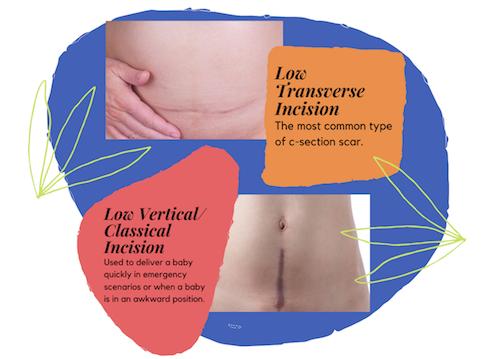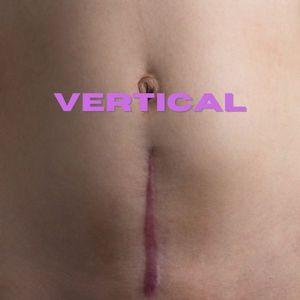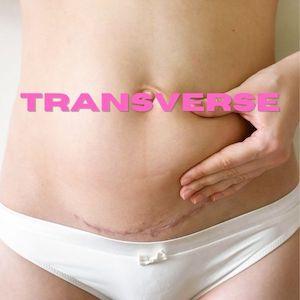Help Center
Online Resource Center for Information on Birth Injuries.
Thousands of women deliver their baby by cesarean section, also known as c-section. Sometimes, these surgeries are planned by a mother and her doctor ahead of time. In other cases, a medical emergency arises during childbirth that necessitates a c-section delivery.

C-sections can save the lives of mothers and their children. However, a c-section is commonly the first surgery a mother has ever had in her life, and the idea of surgery can be frightening. This is especially true for women who experience an emergency c-section. Many women, too, are frustrated to learn that the procedure will leave them with a scar.
It’s important to remember that c-sections are relatively simple, common, and safe operations and that they are usually performed when vaginal birth presents a risk to the health and even the survival of the fetus or mother.
To prepare for the c-section, your doctors will erect a curtain that will prevent you from seeing the surgery being performed. You will not be unconscious, but a spinal epidural or anesthetic will ensure that the lower half of your body is numb. After making an incision in the abdomen and the uterus, your doctor will remove the baby and give it to you to hold. She will also remove the afterbirth.
Your doctor will close your uterus with stitches, which will dissolve on their own, and close your skin with staples or stitches. She will cover the area with bandages.
Doctors may also close incisions with glue or Steri-Strips. Surgical glue and strips hold skin together without the need for stitches or staples. They will fall off on their own a week or so after the c-section.
Mothers usually stay in the hospital for three to four days after having a c-section. During surgery, and for at least twelve hours after, a catheter will be inserted into your bladder. During your hospital stay, you will start breastfeeding, can eat and move around freely, and may take painkillers for discomfort resulting from the surgery.
Once home, you’ll still need to relax and heal. To care for the c-section incision, take a painkiller (Advil and codeine should not be taken while breastfeeding), watch for signs of infection, and wash the area gently every day.
Make sure to dry the wound completely after getting it wet. It’s best to take showers rather than baths, though, so that the site is not submerged. Avoid touching the incision and wear loose clothes that don’t rub.
Some staples and stitches may be taken out at the hospital. Others may need to be removed later or dissolve on their own. Glue and adhesive strips will fall off on their own after about a week. Be sure to change your outer bandages every day, but do not try to take staples or stitches out or rub off strips or glue.
Signs of infection include fever, redness, and swelling of the incision. Lower abdominal pain and sensitivity is also a sign. Women who are overweight, have diabetes or an immunosuppressive disorder, had an infection while pregnant, delivered by cesarean before, who lost a lot of blood during childbirth, had a long childbirth, or who received poor care have a higher risk of infection.
Most of the time, doctors make a horizontal incision in the lower abdomen. This is called a lower transverse incision. This type of c-section leaves a horizontal scar just above your bikini line.
When a baby has to be delivered very quickly or it is in an awkward position inside the uterus, a doctor may make a vertical cut along the stomach. Low vertical and classical incisions start at the lower abdomen and travel up along the center of the stomach towards the bellybutton. Women who are having twins or who have had a c-section before may also require a vertical incision.


Your incision will heal within a few months, and over the years, your scar will naturally fade. Some scars are fine lines while others are wide and raised. On darker skin tones, scars will appear as pale or dark lines. On lighter skin tones, scars will appear as pale or red lines.
Having a scar is distressing, and can damage a person’s body image, self-esteem, identity, and social interactions. Surgical scars in women are tied to anxiety about appearance and sexuality. And, it’s likely that a scar is not the only change you’ve noticed in your body after having a baby.
Pregnancy can have a significant effect on a woman’s body image. This is partly due to societal expectations of what is acceptable. For example, changes to the body during pregnancy may be easier to cope with because pregnancy is viewed positively by society. On the other hand, the post-partum body is rarely discussed or portrayed positively.
Many women feel a societal pressure to return their body to the way it was before, or even to improve upon the way they looked before they were pregnant. Many fear that they will be seen differently in the eyes of others, such as their coworkers or significant other.
Doctors have the opportunity to talk to women about what is healthy and normal after having a baby. More images and narratives about pregnancy, birth, and the postpartum period are needed to dispel myths about perfection and help women reclaim their bodies and their experiences.
If your c-section scar is bothering you, know that you are not alone-thousands of other women have c-section scars. In fact, 30% of births today are cesarean deliveries. Be proud of yourself for going through the difficult process of childbirth. Having a baby isn’t easy for anyone. Likewise, adapting to changes in your body is never easy.
The best way to recover from a c-section is to treat your body right. Avoid strenuous activity, but make sure to keep moving and exercising. Drink water and eat a healthy diet. There is no miracle cure for a c-section scar-be sure to talk to your doctor before starting a medication or lotion you discovered online. Alcohol, cigarettes, and caffeine can dehydrate the skin. Sunscreen, however, is always a good idea and can prevent scars from darkening due to UV damage.
C-sections are more common now than ever before. Nearly 30% of babies are delivered by cesarean. On the one hand, only 10-15% of babies actually need to be delivered by cesarean. Unnecessary cesarean sections leave scars and may result in longer healing times, trauma, and bigger medical bills for new mothers. Surgery can drastically increase the incidence of complications for mothers after they give birth.
On the other hand, cesarean delivery is an important lifesaving tool. It can circumvent scenarios that would otherwise kill or disable a baby. C-sections reduce the dangers associated with high-risk pregnancies. Additionally, many mothers benefit when they feel they have choices in how their birth is managed.
There are 3 distinct stages to incision healing after a C-section and the scar tissue will have a different appearance in each phase.
(1) Inflammatory Stage : The first stage is called the inflammatory stage and it lasts for the first few days after the c-section. This is when the bleeding stops and white blood cells in the body flood the incision site to guard against any infection. The incision site at this stage will be swollen and red or pink.
(2) Proliferative Stage : Stage 2 is the proliferative stage and it lasts for 3-4 weeks. During this stage fibroblast cells begin to gather and proliferate at the site of the incision. Fibroblasts produce collagen which functions to strengthen the site of the incision and pull together the edges. Eventually, new blood vessels form and the collagen gets broken down. During this phase, the c-section scar will get thicker and change color as it contracts.
(3) Remodeling Stage : The final remodeling stage can last for months or a year. During this phase the thick, puffy scar tissue gradually flattens and loses its color. This is when the c-section scar should fade away and start to look better.
Steri strips (also called butterfly stitches) are small strips of special medical tape that are used to hold two sections of skin together while healing after a surgical incision. Steri-strips are commonly used to keep the c-section incision closed and clean above the stitching. The use of steri-strips can help minimize the extent of any c-section scarring because the strips keep the outer skin layers tight, clean, and protected from the sun during the healing process.
Steri-strips should be left in place for as long as possible after your c-section. In most cases, the strips will eventually fall off on their own once they have served their purpose. This usually happens after a 7-12 days. If they don’t fall off on their own your doctor will remove them at your follow-up appointment.
C-section Glue
C-section glue (incision glue) is a commonly used method of keeping a c-section incision closed after the procedure. C-section glue is a special type of medical adhesive that dries within seconds after being exposed to the air. Incision glue is usually covered with a gauze dressing after application.
If properly applied incision glue is very effective. It forms a protective, waterproof bond that guards against infections while allowing showering and washing. The other major benefit of incision glue is that it allows the fastest healing and leaves the least amount of c-section scarring. If your c-section glue starts peeling off soon after surgery you should contact your doctor. Women with certain skin types have allergic reactions to the glue which can cause this.